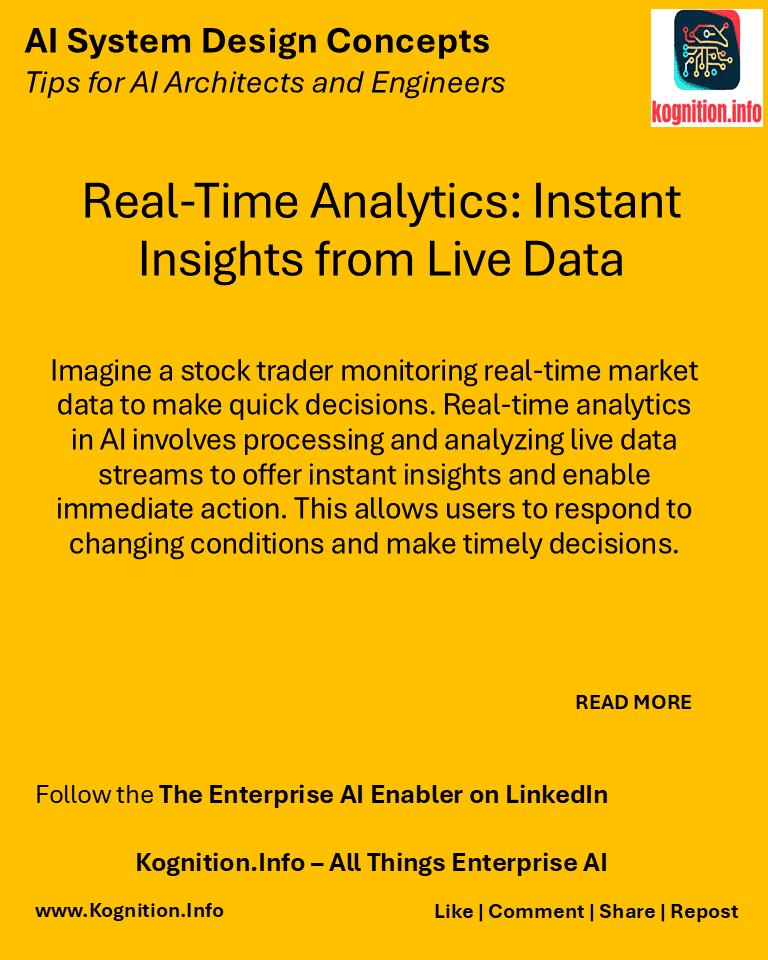
Imagine a stock trader monitoring real-time market data to make quick decisions. Real-time analytics in AI involves processing and analyzing live data streams to offer instant insights and enable immediate action. This allows users to respond to changing conditions and make timely decisions.
Use cases:
- Fraud detection: Analyzing real-time transaction data to identify and prevent fraudulent activities.
- Network security: Monitoring network traffic in real-time to detect anomalies and security threats.
- Personalized recommendations: Updating user preferences and providing recommendations based on their current activity.
How?
- Choose a streaming platform: Select a platform like Apache Kafka, Apache Flink, or cloud-based solutions like AWS Kinesis.
- Develop real-time processing pipelines: Design pipelines to ingest, process, and analyze data streams.
- Utilize real-time analytics tools: Employ tools and algorithms for real-time data analysis and visualization.
- Integrate with AI models: Connect real-time analytics with AI models to provide predictive insights and trigger actions.
Benefits:
- Immediate insights: Enables real-time understanding of dynamic situations and trends.
- Faster decision-making: Allows for quick responses to changing conditions and events.
- Improved operational efficiency: Optimizes processes and automates actions based on real-time data.
Potential pitfalls:
- Data volume and velocity: Handling high volumes of data with low latency can be challenging.
- Complexity: Designing and managing real-time analytics systems can be complex.
- Data quality: Ensuring the quality and accuracy of real-time data is crucial for reliable insights.
